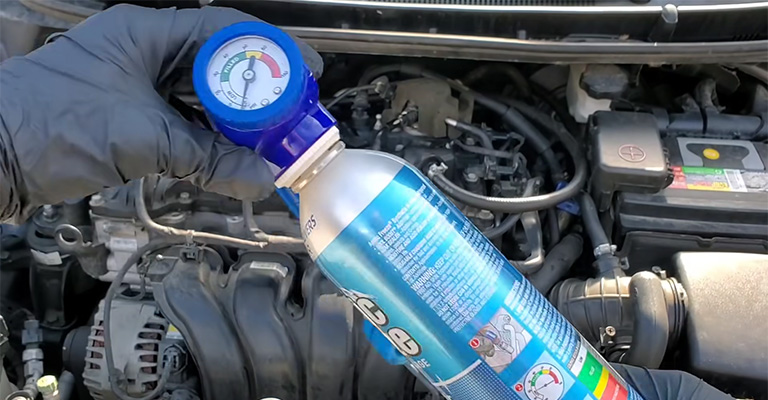Understanding the refrigerant capacity specific to your Honda Accord model and year is essential for proper maintenance and servicing. This information ensures optimal performance, efficiency, and longevity of the air conditioning system.
In this article, we will provide a comprehensive overview of the Honda Accord’s refrigerant capacity by model and year, along with guidelines for refilling and maintaining the air conditioning system.
Please note that while we strive for accuracy, it is always recommended to refer to the vehicle’s manual or consult a professional for precise and up-to-date information regarding your Honda Accord’s refrigerant capacity.

Honda Accord Refrigerant Capacity
Here’s a table showcasing the Honda Accord Refrigerant Capacity by Model and Year, along with the unit name (grams):
| Model and Year | Refrigerant Capacity |
|---|---|
| Honda Accord – Denso compressor, 1993-1998 | 700-750 |
| Honda Accord – Denso compressor, 1998-2003 | 500-550 |
| Honda Accord – Hadsys compressor, 1993-1998 | 700-750 |
| Honda Accord – Sanden compressor, 1998-2003 | 500-550 |
| Honda Accord 2,0i/2,4i, 2003-2008 | 500-600 |
| Honda Accord 2,0i/2,4i/2,2D-i-DTEC, 2008.07 onwards | 475 |
| Honda Accord 2,2D i-CTDi, 2003-2008 | 450-500 |
| Honda Accord Aerodeck/Coupé – Denso compressor, 1994-1997 | 600-650 |
| Honda Accord Aerodeck/Coupé – Hadsys compressor, 1994-1997 | 600-650 |
| Honda Accord Coupe, 1998-2003 | 600-650 |
| Honda Accord Diesel LHD, 1996-1998 | 650 |
| Honda Accord Diesel RHD, 1996-1998 | 700 |
Tips for Proper Refrigerant Measurement and Filling Procedures

When refilling the refrigerant in your Honda Accord’s air conditioning system, it is important to follow proper measurement and filling procedures. Some general tips include:
- Use a reliable and calibrated refrigerant gauge to measure the exact amount of refrigerant needed.
- Follow the instructions provided by the manufacturer for the specific model and year of your Honda Accord.
- Ensure the system is properly evacuated before refilling the refrigerant to remove any air or moisture.
- Use appropriate safety precautions and protective equipment during the filling process.
Addressing Potential Risks and Consequences of Overfilling or Underfilling Refrigerant
Overfilling or underfilling the refrigerant in your Honda Accord’s air conditioning system can have adverse effects.
Overfilling may cause excessive pressure within the system, leading to compressor damage or leaks.
Underfilling can result in insufficient cooling capacity and reduced efficiency. It is important to maintain the correct refrigerant capacity to prevent these risks and ensure optimal performance.
Conclusion
Understanding the refrigerant capacity of your Honda Accord is vital for maintaining optimal performance and efficiency of the air conditioning system.
By following the manufacturer-recommended guidelines and consulting professional assistance, you can ensure proper maintenance and servicing.
Remember to refer to the vehicle’s manual or seek professional advice for accurate and up-to-date information specific to your Honda Accord model and year.
Prioritizing proper refrigerant capacity will contribute to a comfortable driving experience and extend the lifespan of your air conditioning system.

Leave a Reply